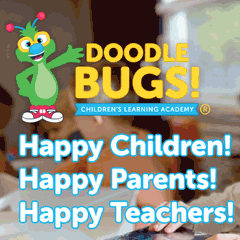Virtual School: Where Homeschooling Meets Traditional School
Parents now have many educational choices for their children’s schooling: private, public, charter, Montessori, homeschool, virtual school, and more. Sectioning which option is best for your child can be overwhelming. Homeschooling continues to grow in popularity, but many parents simply don’t know how to teach their child at home. Some parents say they enjoy all the benefits of homeschooling with less frustration thanks to virtual school.
Virtual school is basically like public school at home. Your child learns everything he/she needs to know in the household setting and at his/her own pace, while hitting important benchmarks set by the school district. “In addition to providing the ability for increased individual attention, this interaction can also increase a student’s tech savvy, something vital in today’s modern workforce,” says Patty Betoni, Florida Virtual Academy Head of School.
 According to The International Association for K-12 Online Learning (iNACOL), who will host their annual conference in Orlando this fall, “There were an estimated 1,816,400 enrollments in distance-education courses in K-12 school districts in 2009-2010; almost all of which were online courses.” The iNACOL shares that their estimate doesn’t include kids attending “most full-time online schools,” a number which increased from 200,000 in the 2009-2010 school year to 275,000 during the 2011-2012 school year. A 37.5% increase certainly demonstrates a trend in the online, at-home education option; perhaps a natural progression to our now technology dependent society.
According to The International Association for K-12 Online Learning (iNACOL), who will host their annual conference in Orlando this fall, “There were an estimated 1,816,400 enrollments in distance-education courses in K-12 school districts in 2009-2010; almost all of which were online courses.” The iNACOL shares that their estimate doesn’t include kids attending “most full-time online schools,” a number which increased from 200,000 in the 2009-2010 school year to 275,000 during the 2011-2012 school year. A 37.5% increase certainly demonstrates a trend in the online, at-home education option; perhaps a natural progression to our now technology dependent society.
So, how does it work? The two most common formats, according to the Center for Public Education, are referred to as “fully online” and “blended learning.” “Fully online” can mean that every aspect of the school academic experience is provided online, i.e. all interaction is done through the computer; however, a ‘teacher’ is still accessible. “Blended learning” is a term used to indicate a mixture of in-person and online instruction. Gretchen Roe, Community Outreach Liaison for Orange County Virtual School (OCVS) and Calvert, as well as a mom who has homeschooled six children over the course of 18 years, says, “Virtual schools usually have a school calendar, with the expectation that a family will attain a certain measure of proficiency on a daily basis ─ something like five lessons a week. How the family accomplishes that is left at the discretion of the family; for instance, doing all the math one day, or doing five days’ worth of work in three.”
As far as cost (associated through OCVS), Roe shares, “The principal difference between traditional homeschooling and virtual schooling is really who pays for the materials ─ there is no inherent cost for materials in a virtual setting, because the cost is borne by the district.” The Center for Public Education states that “funding for online learning varies by state, and ranges from 70 to 100 percent of state and local per pupil rates. The impact on district funds also varies by state. In some states, districts are billed for each student enrolled online. In addition, accounting for the actual cost of virtual courses and schools is often lacking.”
Reasons for making a switch to or starting out with virtual school are many and varied. Betoni shares that, “Removing the restrictions of time and place allows for successes for many students.” Megan Bales, soon-to-be mom of 3, adds, “I love that my daughter is not crammed into a class of 25 kids with an overwhelmed, overworked, under-appreciated, understandably grumpy teacher. I like that we have a ‘teacher’ assigned to our family who checks in with us. It was a good transition for us since we pulled my oldest out of public school after 1st grade and had no idea how to begin homeschooling. She is very detail-oriented and thrives on schedule and organization, so it was nice not to have all the pressure on me to find curriculum and keep up momentum.”
Those who choose to homeschool, of course, have different reasons for preferring a home-based education model, such as learning styles or social motives. “I particularly think that a virtual environment is great for a child who does not conform to the traditional setting ─ for instance, my second grader is a very normal, testosterone charged boy, who, in a public school classroom would be labeled a ‘problem’ because he does not sit for an hour at a time,” explains Roe.
Pertaining to the impact of flexibility on family and lifestyle, Kelly Stilwell, mom of 2, declares, “This will be our 4th year doing virtual school, and we love it! We can take our computers with us when we travel, move as quickly through the class as we choose, and have a teacher for every class that is available from 8-8. In the past, I’ve paid $10,000 for private school and not had that kind of support.”
For those who love the idea of homeschooling but may be afraid to jump in or have a hesitant spouse or vocal family members, Megan Bales says, “Going from a brick and mortar school to virtual school, as opposed to just jumping into my own form of homeschooling, felt more comfortable for my husband and mother-in-law, who were both hesitant about homeschooling in general. So it helped ease the transition for our family. It helps my hubby feel like our kids are on target educationally for their ages.”
“As of 2012, Florida is the first state to offer full and part-time options to all students in grades K-12,” according to iNACOL. Interested in virtual school education for the upcoming school year? Explore the local options, such as Florida Virtual Academies (K12.com/FLVA) and Orange County Virtual School (OCVScalvert.org).
Kerrie McLoughlin homeschools her 5 kids and shares the fun at TheKerrieShow.com.









